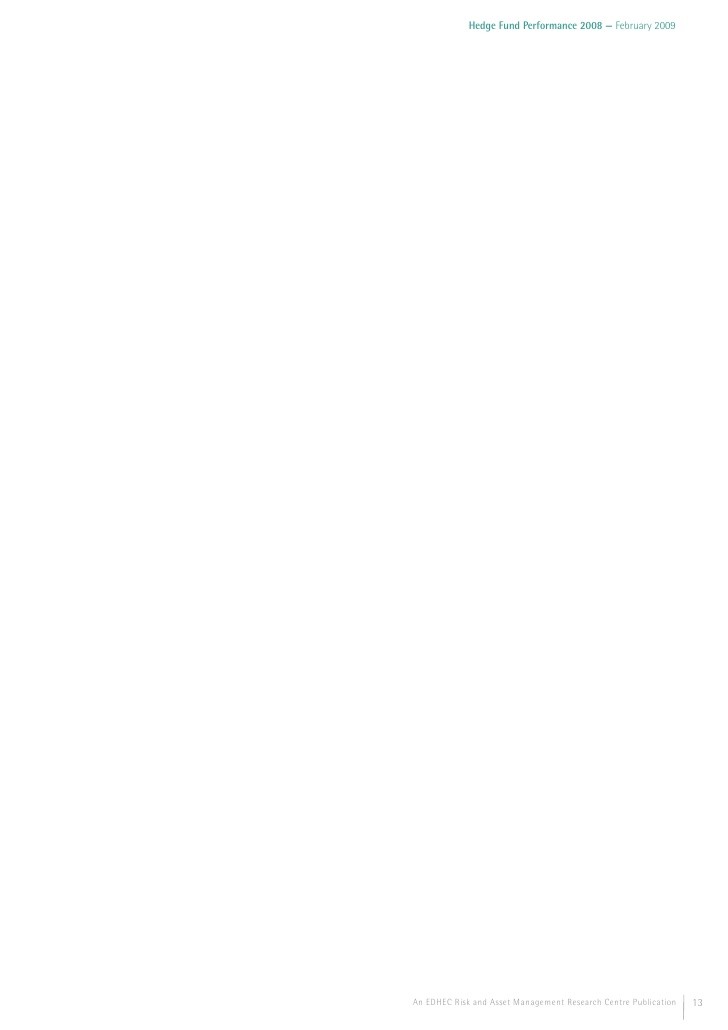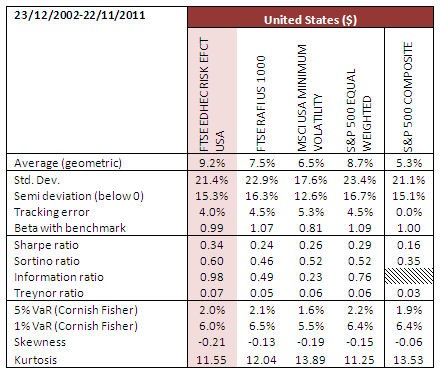EDHECRisk Alternative performance measures for hedge funds
Post on: 16 Март, 2015 No Comment

Alternative performance measures for hedge funds
Authors: J.-F. Bacmann and S. Scholz
Source: AIMA Journal
Date: June 2003
The Sharpe ratio and the Sortino ratio, two very well-known performance indicators, exhibit some drawbacks when they are applied to hedge funds. While hedge fund returns follow a hyperbolic distribution (Schmidhuber and Moix (2001)), the Sharpe ratio is only appropriate if the returns follow a symmetrical distribution, by representing the risk by the standard deviation of the return. The Sortino ratio provides a solution to the asymmetry of the return distribution via a downside deviation instead of a standard deviation, but it does not take higher moments into account with accuracy.
In order to improve the risk approach in the context of hedge funds, Bacmann and Scholz compare the results of the Sharpe ratio and the Sortino ratio to the results obtained through two alternative measures, the Omega measure and the Stutzer index. The Omega measure was introduced by Keating and Shadwick (2002)*. The main advantage is that this measure incorporates all the moments of the return distribution, including skewness and kurtosis. Moreover, in contrast to the Sharpe ratio, ranking is always possible, whatever the threshold. The Stutzer index was introduced by Stutzer (2000). It is equal to the maximum decay rate to zero of the expected excess return: the higher the Stutzer index, the higher the time horizon, and the better the hedge fund.
To compare the efficiency of the performance indicators, the authors examine the ranking of the performance of 44 indices by the Sharpe ratio, the Sortino ratio, the Omega and the Stutzer index. The database used, provided by CSFB/Tremont, HFR and Stark, covers the period from January 1994 to February 2003. 4 indices are drawn from the traditional industry (MSCI World Index, Russell 2000, S&P 500 and the Salomon World Government Bond Index). 15 indices are normally distributed according to the Jarque-Bera statistic at the 5% significance level.

In comparison with the Sharpe ratio, 28 funds have the same ranking according to the Sortino ratio, 36 funds according to the Omega and 37 funds according to the Stutzer index. But if we consider the higher moments, for the indices whose rank improves, the negative skewness decreases from -0.75 to 0.45 in the case of the Omega, and it turns positive in the case of the Stutzer index. The positive kurtosis decreases from 7.18 to 4.09 in the case of the Omega, and from 7.22 to 3.69 in the case of the Stutzer index. For the indices whose rank deteriorates, the negative skewness significantly increases from 0.75 to 2.60 in the case of the Omega, and from 0.82 to 2.95 in the case of the Stutzer index. The positive kurtosis increases strongly from 7.18 to 16.85 in the case of the Omega, and from 7.22 to 19.17 in the case of the Stutzer index. In contrast to the previous results, ranks are similar when the authors only consider the traditional indices, whatever the performance measure applied. It appears that higher moments are the source of the mismatch between the Sharpe ratio and the alternative measures. The Sharpe ratio tends to underestimate or overestimate the performance results in the context of hedge funds.
* Kazemi, Schneeweis and Gupta (2003) show that Omega (L)= C(L) / P(L), where C(L) is essentially the price of a European call option written on the investment and P(L) is essentially the price of a European put option written on the investment. They also provide a Sharpe-Omega ratio = (expected return threshold) / put option price.
Related links














